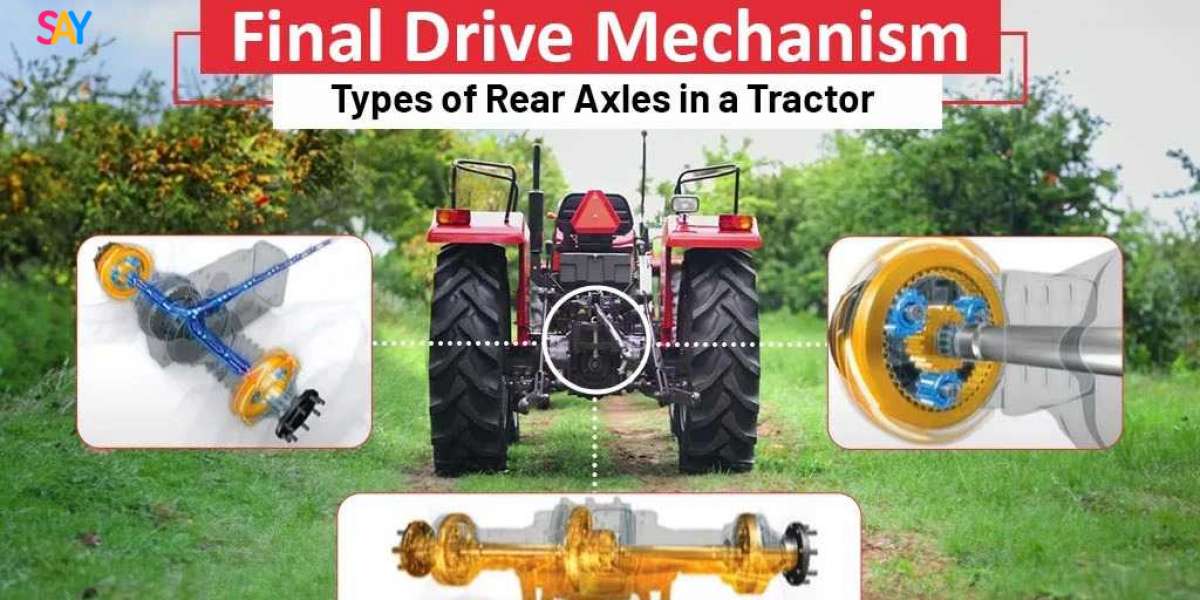The final drive in a tractor is the mechanism that is responsible for transferring power from the engine to the wheels of the tractor, allowing the tractor to move forward or backwards. It is a gear reduction unit placed between the differential and the drive wheels. In this blog, you will read about the Work of Final Drive Mechanism in Tractor Axle and Types of Rear Axles in a Tractor.
Work of Final Drive Unit:
For the tractor to operate as intended, power must be transferred from the engine to the back wheels. The power transmission should be set up to reduce speed and increase torque to the back wheels.
Using reduction technologies in tractors helps to drive at a lower speed, and increases power for the drive wheels.
Different Types of Reduction Technology:
Single Reduction: It is a driven axle whose purpose is to transmit torque from the input flange through the output flange to the front axle.
Inboard Reduction: Gear reduction occurs twice in this system: once at the crown pinion wheel and once at the bull pinion gears that are fastened to the axle shafts on both sides.
Hub Reduction: With the exception of the bull-pinion arrangement being placed in the wheel hub, this system functions similarly to inboard reduction technology.
Epicyclic or Planetary Gear Reduction: Epicyclic gear reduction is a type of gear arrangement in which speed and torque are transmitted in coupling with each other.




